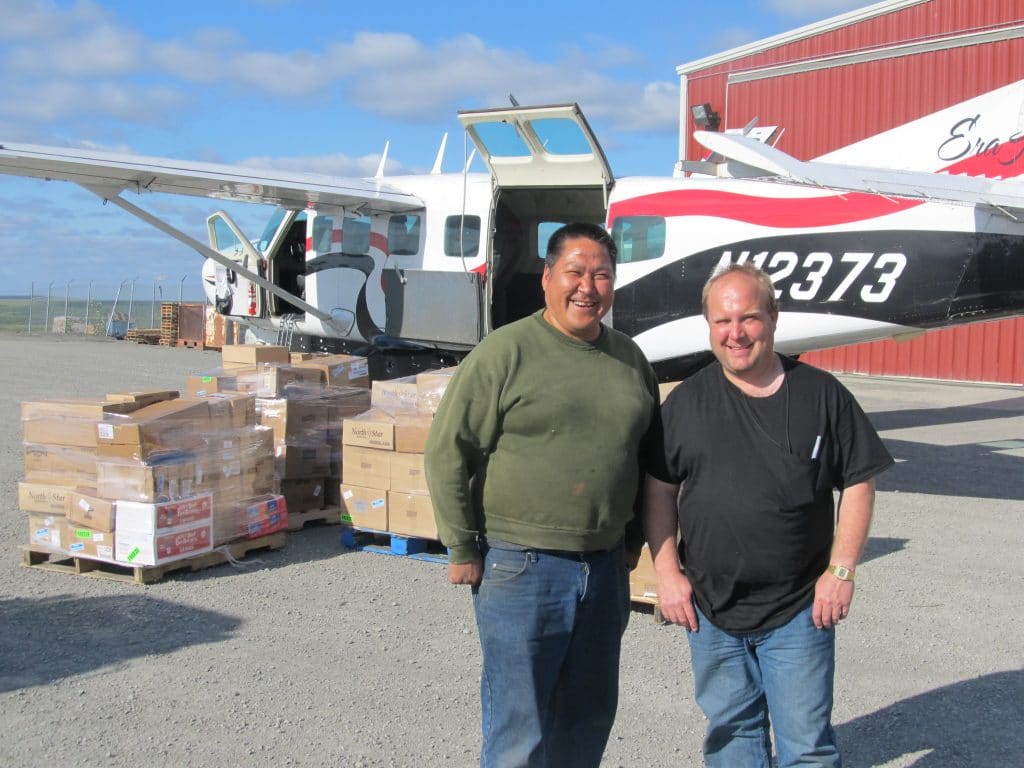Alaska & The Columbian Exchange
After an hour of flight time we found ourselves in the taiga/tundra and we were in an area that looked and felt like the Florida Everglades rather than Alaska. There are water and riverine type confluences in all directions, for miles and miles. The hum of the engine kept us focused on our goal St. Mary’s on the Yukon.
Soon we are following a large river and through my headset I am told that it is the Yukon. We follow it for another twenty minutes at one hundred seventy miles per hour, as I stare blankly at the auto pilot. Soon the village of St. Mary’s appears below on the banks of this great river. Houses appear all neatly oriented along the river and the boats are all helter skelter on the shoreline. There is a road….or maybe just an ATV pathway from the landing strip, in the upcoming distance a small gravel runway. We bank to the right, set down and come to a halt within two hundred yards. We then taxi onto a bituminous tarmac that denotes the main terminal.
The plane comes to a halt and we were met by a native that seemed to have anticipated our arrival. He brought us fresh smoked salmon. A startlingly realization takes place when I come to understand that we aren’t on a tourist trip. People have come to off load our plane so we can quickly return to Anchorage. I sat a bit beleaguered realizing that after a two hour flight, deep into the Alaskan bush. This was as close as I was going to get to this village and the Yupik inhabitants. It is time to return to Anchorage.
ALASKA & THE COLUMBIAN EXCHANGE (3 of 3 parts)

The book allows me to understand my time and place in the Yupik village of St. Mary’s Alaska. I realize that a “Columbian Exchange” has just taken place. We are still trading with the “natives” and participating in the “Columbian Exchange” that began 500 years ago.
I then realize that I have the insight to understand what the Yupik nation might want from a society outside their domain. I can analyze their cargo! Anthropology #101 ! The Yupik people and their culture have historically existed on salmon and moose. I start viewing my photos to see what we have brought them. What does this culture want from the outside world?
On the tarmac sat the three pallets of neatly shrink wrapped cargo. Wrapped to keep it from sliding around in the plane. I was able to study the photographs and quiz the pilot to get an understanding of the exchange and the cargo that we brought them.
Forty six of Alaska’s 250 villages still do not have piped water or sewer but this curious exchange allows them the following; Approximately 20 to 25 % of the cargo weight was beef. Another heavy portion was soda pop. Other packages contained Wheat Thins and something called Pilot Bread. I believe this is a hard tack biscuit that goes good with fish. Ketchup, flour, sugar & pizza hot pockets were amongst the remaining cargo.
Our exchange is complete so we take our backpacks and gear to the plane we are to return to Anchorage. We taxi down the runway, liftoff and with our backs to the sun and lift off. We are one ton lighter and our airplane is seems much more nimble. On our return flight we pass over a gold mining camp and we skirt around a raging forest fire that can be seen miles in the distance.
As we fly home we snack on their smoked salmon and I ponder and suspect that they are enjoying our beef.
Bill Keitel
Tutus in Talkeetna (Part 1)
Commerce in the Yukon (Part 2)
Alaska the Columbian Exchange (Part 3)